Let’s do battle: 2011-16 | Short History of the Kent Spitfires
Thursday 16th April 2020
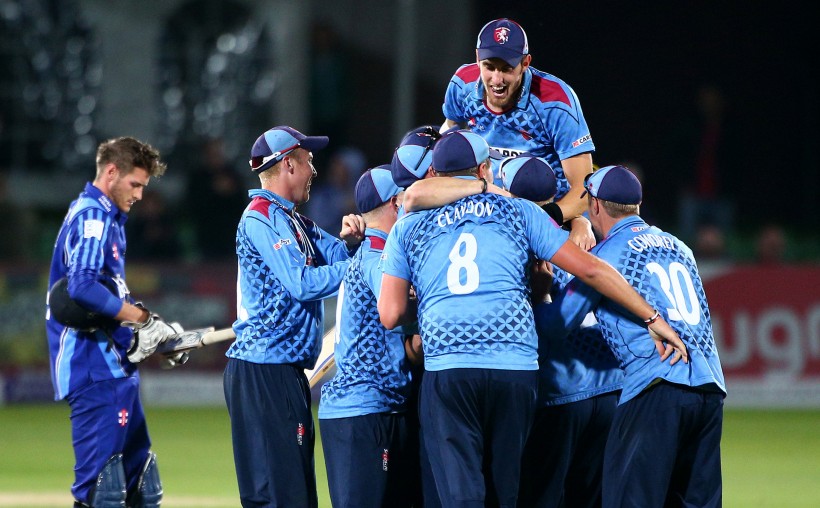
Ahead of the 2011 season, the Kent Spitfires saw themselves re-branded – the yellow and black Spitfires logo, blasted by its critics as being ‘cartoonish’, was replaced with a red and blue logo featuring two Spitfires flying side-by-side, in a move described by the Club as “honouring the past whilst focusing on the future”.
The Club also advertised for auditions for a new part of the T20 matchday experience: the ‘Spitfires Sweethearts’ were established alongside the new Spitfires brand, to “dazzle and entertain crowds during the 2011 Twenty20 cricket season”.
On the field, the Spitfires reached the Quarter Finals of the Friends Life T20, finishing third in the South Group on the back of scintillating form with bat and ball for both Azhar Mahmood and Darren Stevens. Mahmood had recorded a Century against Gloucestershire at Beckenham, and made four scores of 50 or more, averaging 40.41. Stevens had a similar run with the willow, averaging over 51.00 and taking eight wickets at just 12.12.
It was, however, overseas signing Wahab Riaz that impressed the most with the ball in T20s that year. The Pakistan left-armer took a hat-trick, ending up with five wickets in seven balls, in the same match at Beckenham against Gloucestershire. On Kent’s march to the Quarter Finals, Riaz took 20 wickets at 19.85.
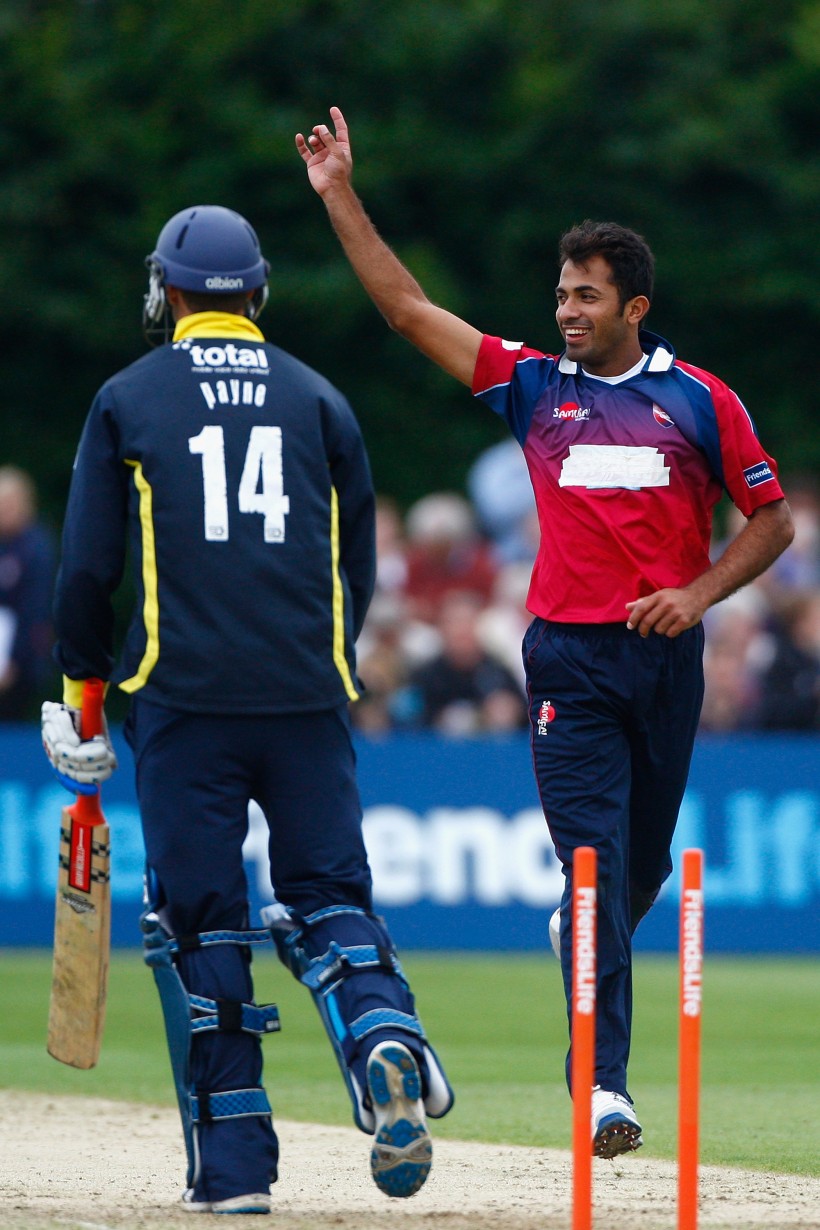
The Spitfires missed out on a place at Finals Day in 2011 despite Azhar Mahmood smashing 91 runs from 52, and Leicestershire remarkably chased down Kent’s huge total of 203/3 with four balls to spare.
Kent finished fourth in Group A of the Clydesdale Bank Pro40, Martin Van Jaarsveld standing out with another List A century to his name and an average in that competition of 44.83.
Despite worries that the Summer Olympics in London would impact on attendances, the Spitfires enjoyed a huge level of support in 2012.
It was a mixed bag in T20 competition that year, despite good all-round performances with the ball, especially Academy product Adam Ball who took 12 wickets at 18.08. Kent finished third in the South Group and missed out on a Quarter Final spot by two points.
Kent also finished third in their Pro40 Group, which saw the emergence of Sam Billings as a serious white-ball player for the first time. He smashed a then-Club record 143 from 113 deliveries against Derbyshire, 315 runs in total from 11 matches.
The was a slight dip in the Spitfires’ one-day form in 2013, despite a zenith of a one-day season from Rob Key, who had relinquished captaincy to James Tredwell that year. He hit two centuries and averaged 50.50. Matt Coles continued his rise in form, recording 15 wickets in 10 matches.
Kent also recorded a then world-record run chase in List A competition, chasing down Sussex’s 336/5 in 38.3 overs, Northeast recording his first career List A ton, and Darren Stevens also making 118 from only 53 deliveries, with 12 fours and seven sixes.
In 2014, the Spitfires continued to suffer from a stop-start run of form in T20 competition, and even though Darren Stevens had excelled with the ball in the white-ball format with 18 wickets at 19.44, Kent finished sixth in the South Group. Stevens was honoured at the PCA Awards that year, being named PCA T20 Blast Player of the Year after his brilliant performances in the format that year. He had also averaged over 27.00 with the bat.
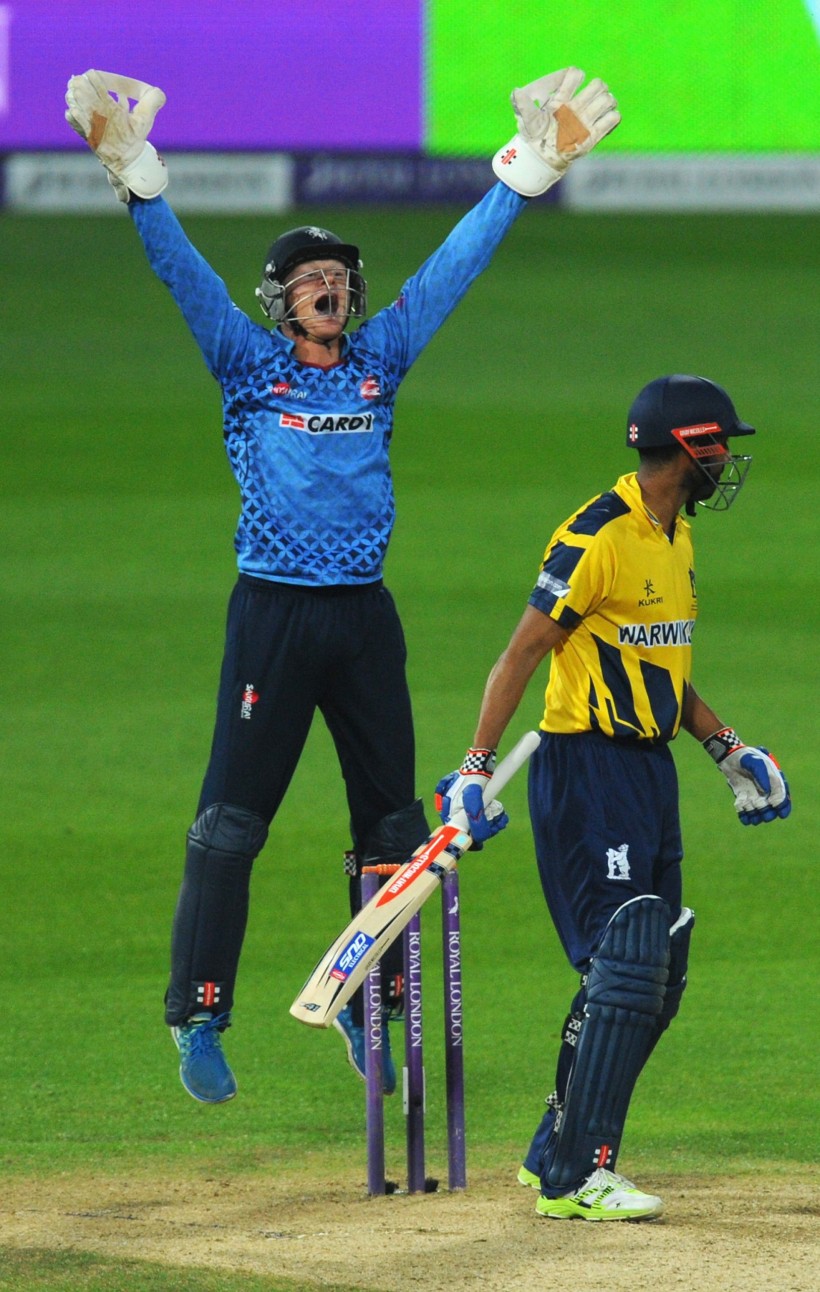
However, the newly named Royal London One-Day Cup proved to be a good hunting ground for Kent. They eased into the Quarter Finals after finishing second in Group B and only losing once (they earned a thrilling tie at the Oval where Kent and Surrey both finished on 314 runs).
Kent conquered Gloucestershire at The Spitfire Ground, St. Lawrence as Sam Northeast anchored the Spitfires’ innings after winning the toss and batting first, making 78 runs and batting with four partners, whilst Ben Harmison helped mop up the Gloucestershire batting innings with 3/40 and Kent won by 24 runs.
They had earned a semi-final clash with Warwickshire at Edgbaston, the site of their 2001 Sunday League and 2007 Twenty20 Cup victories. After again winning the toss and choosing to bat, the Spitfires found it difficult to score runs quickly and build up partnerships, finishing on 215/8. In reply, Warwickshire met their target of 216 with 3.3 overs remaining.
Ahead of the 2015 season, Kent unveiled a new, ‘marmite’, T20 playing kit – what can only be described as a ‘sunset’ of blue, yellow and red; with a donation from the sale of each shirt going towards The Battle of Britain Memorial Trust on the 75th Anniversary of the event.
Sam Northeast was utilised as the Club’s white-ball captain from the 2015 season, which saw a reversal of the Spitfires’ fortunes in both competitions. Kent qualified for the One-Day Cup quarter finals by a narrow margin due to a fourth-placed Group B finish.
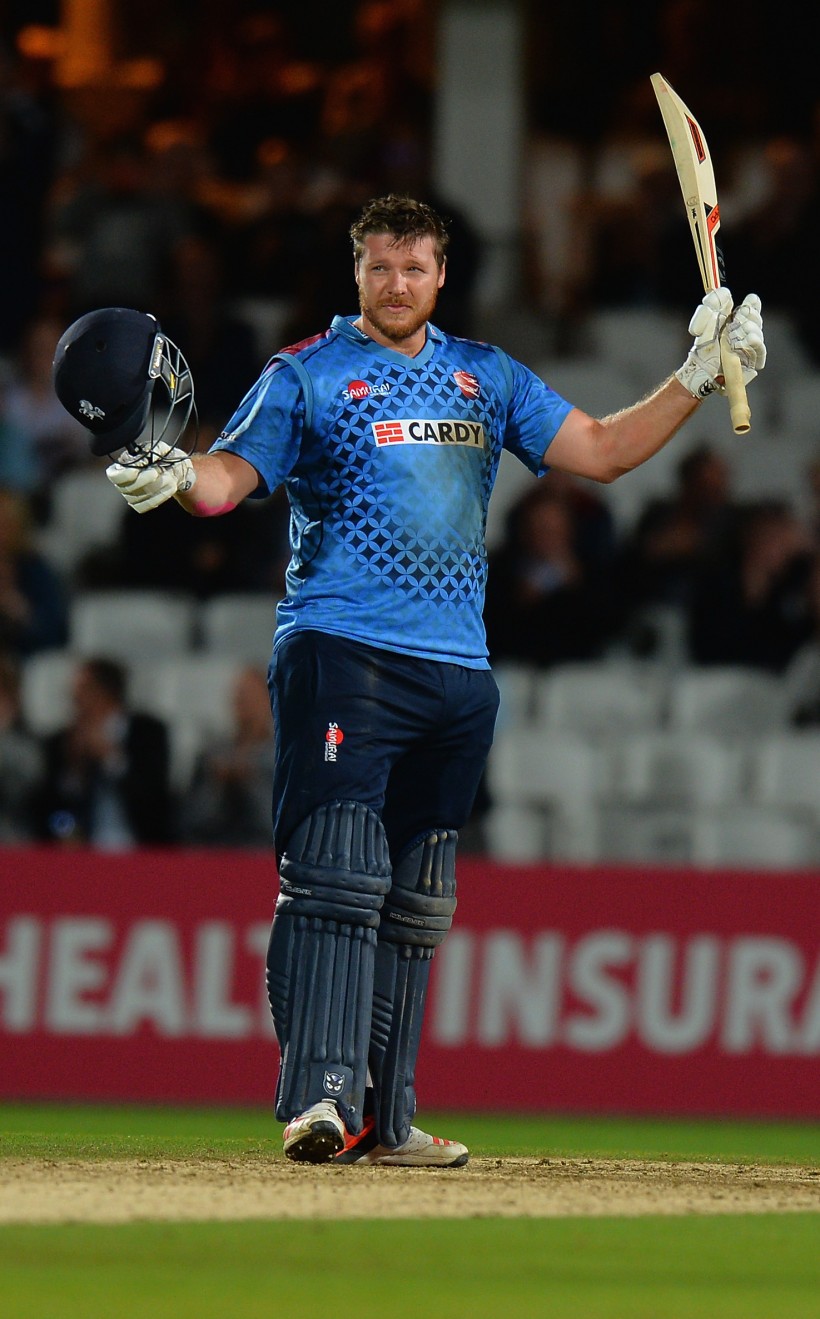
In the quarter-final clash with Surrey at the Oval, Surrey made 273 all out, including a Jason Roy ton. Kent lost most of their middle order batsmen cheaply as they hastened their reply, and all seemed lost before one of the most remarkable one-day innings Spitfires supporters at had seen almost snatched victory from the jaws of defeat.
Matt Coles, coming in at nine, made waste of Surrey’s bowling attack and soared to his maiden career List A century from only 73 balls with seven fours and nine sixes. However, he ran out of batting partners and was the last wicket to fall with Kent on 233, and Surrey progressed to the semi-finals.
The Spitfires also progressed to the quarter-finals of the T20 Blast, after topping the South Group in the tournament. Skipper Sam Northeast had been a destructive presence for Kent, scoring a century against Somerset to steer Kent to victory despite 151* from Somerset’s Chris Gayle; Northeast averaging 49.30 with his ton and four fifties.
Alex Blake also forced and unlikely victory over Hampshire in the group stages, smashing 71 not out from 30 balls to secure a victorious run chase in Southampton. Mitchell Claydon was a big presence in Kent’s bowling attack, and took 20 wickets in 2015 at 20.30.
The visit of Lancashire in the quarter finals to The Spitfire Ground, St. Lawrence ended in absolute agony for Kent. Both sides finished after 20 overs on 142, and in the days before super overs – Lancashire progressed having lost fewer wickets.
Kent were able to call upon the services of South Africa quick Kagiso Rabada for a part of the Blast in 2016 after not fielding an overseas player in the year before, and even though Rabada took six wickets and the death bowling of David Griffiths kept Kent in the competition, they failed to qualify from the South Group in T20 competition.
However, Daniel Bell-Drummond recorded his first T20 century for the Club, with 112 from 65 balls against Surrey at The Nevill Ground, Tunbridge Wells.
Five wins in eight matches in the One-Day Cup meant that Kent were once again in the knock-out stages of the tournament, and had to contend with the visit of Yorkshire to Canterbury. A few days before the match, it was announced that England players had been released to play for their county sides, and Yorkshire suddenly had a huge boost of being able to field players such as Joe Root, Jonny Bairstow, Adil Rashid, Liam Plunkett and David Willey.
Kent won the toss and decided to field, and Yorkshire finished 256/9 after 50 overs. Matt Coles finished with 3/39. The thousands in attendance at Canterbury witnessed mini-collapse at the start of the innings and feared the worst. At 66/4, Darren Stevens and Alex Blake began to tilt the match to get Kent back in it with a partnership of 86, and a small glimmer of what Matt Coles can do with the bat after 22 runs from 13 balls ensured that the Spitfires weren’t going down easily. Once Coles fell for a very close LBW decision, Kent weren’t able to keep up momentum and missed out on a semi-final berth by only 11 runs.
By Liam Knight
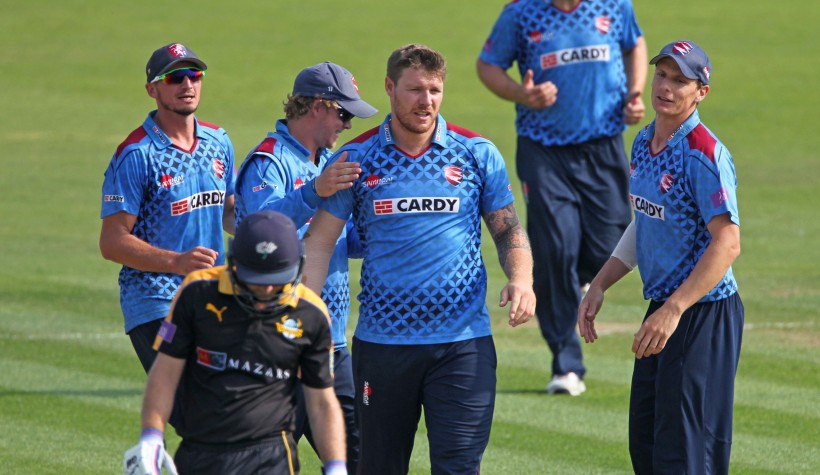
Our ever-popular 2019 & 2020 Vitality Blast shirt is back in stock on the Kent Cricket Online Shop now >>>

